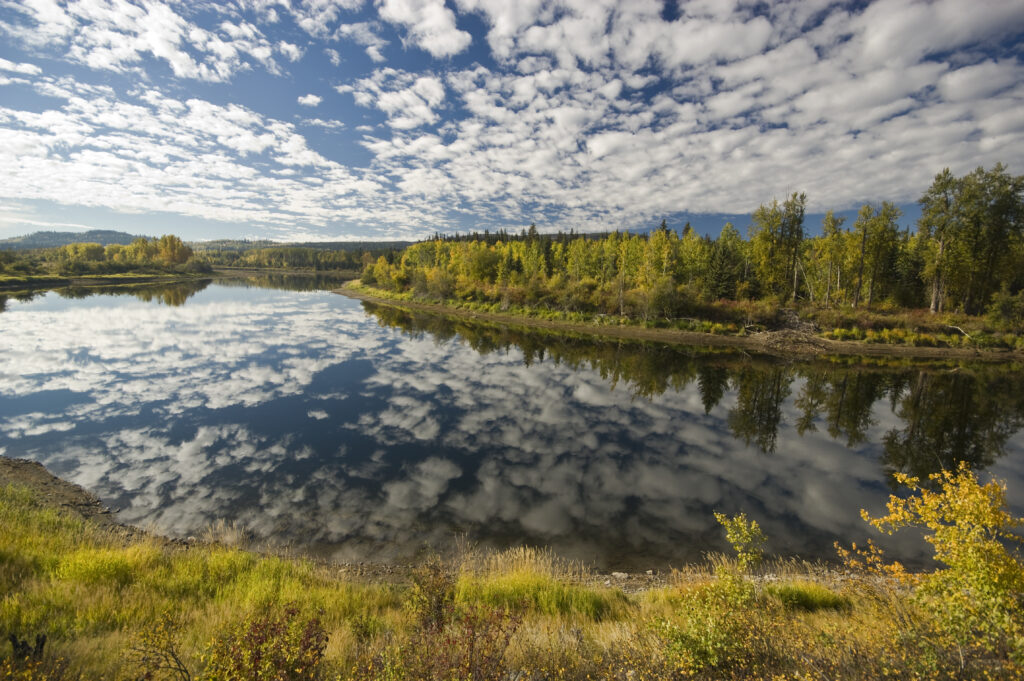In the early 1950s, the Kenney Dam is built, blocking the flow of water into the river and diverting it towards the Kemano Generating Station to power an aluminum smelter. Today, the Nechako White sturgeon is an endangered species.
Growing up on Stellat'en First Nation decades later, Janelle Lapointe, an Afro-Indigenous climate justice and Indigenous rights activist, watched similar events unfold in her community as a result of forestry and mining practices.
“My work started long before I ever considered myself an activist,” Janelle says. “I was very fortunate to grow up on my matrilineal homelands and learn about my responsibility to the land, but I also witnessed a lot of environmental destruction [and] grew up with poisoned drinking water from mine runoff.”
The Nechako River — and the First Nations communities near it — might look a little different today if The United Nations Declaration on the Rights of Indigenous Peoples (UNDRIP) existed then.
UNDRIP — passed into law in BC in 2019 (12 years after it was adopted by the UN General Assembly) — affirms the rights of Indigenous Peoples, including: Their rights to "maintain and strengthen their distinctive spiritual relationship" with their lands (Article 25); "own, use, develop and control" their lands (Article 26); conserve and protect their environment (Article 29); and consent to — or reject — projects that affect their lands, territories and resources (Article 32).
“We've yet to see BC implement [UNDRIP] in full,” Janelle says, adding that doing so will enable Indigenous Peoples to “participate as fully as they should” in combating climate change.
For millennia, Indigenous Peoples have “survived sustainably” because they understand what it means to live in “a good reciprocal
relationship with the land,” she explains. They have knowledge and practices that have been “tried and tested over thousands of years.”
The Stellat'en Peoples are nomadic and had to move around in time with the seasons. They became attuned to the seasons changing, learned when certain wildlife would be available, and adapted to harsh weather conditions.
Similarly, many Indigenous Peoples learned to care for their lands by performing cultural burns. These low, slow fires eradicated pests, encouraged the growth of healthy grass, and cooled the temperature of surrounding streams. They also helped fight wildfires by clearing forests of dead grass and leaves. So, when a wildfire did start, it was naturally lower in intensity.
And Indigenous Peoples don’t just have knowledge and practices, they have “strong governance systems centered on the wellbeing of land and people,” Janelle says. Strong governance systems that have nothing to do with the structures causing the climate crisis, “like capitalism and colonialism.”
With their knowledge, practices, and governance systems, Indigenous Peoples have watched over their lands for generations, and Janelle believes that when partnered with Western science, it can “be the key to mitigating the climate crisis.”
Curious for more science behind climate change and social justice?
Explore solutions for regenerating our planet at Change Reaction.

